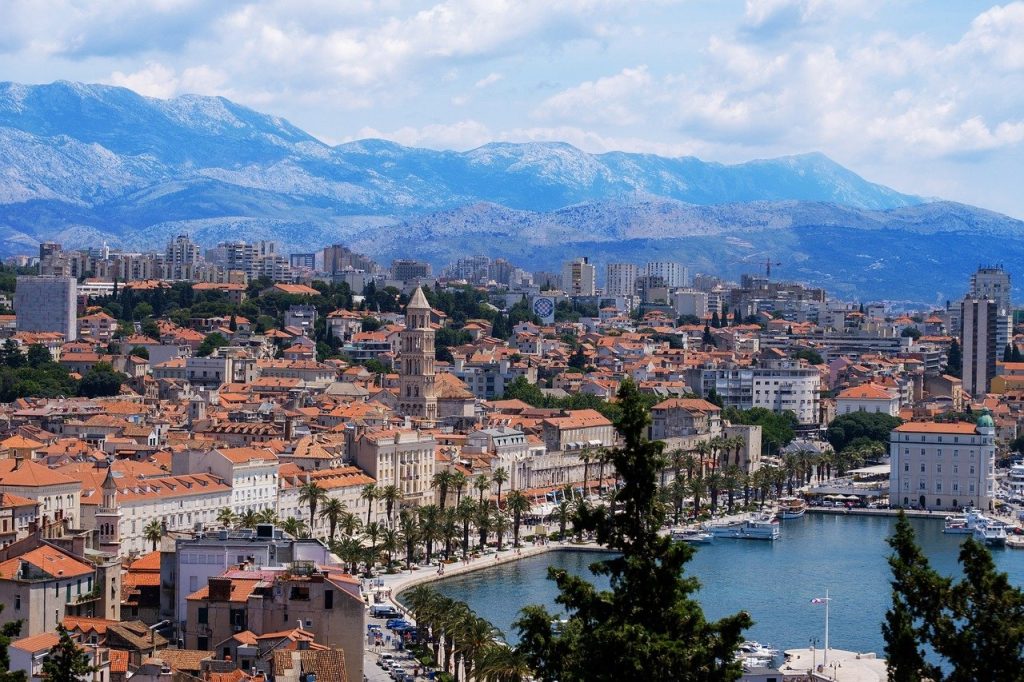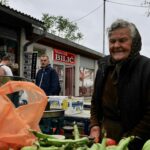Slobodna Dalmacija writes that because earthquakes cannot be prevented, the implementation of measures to mitigate the consequences and preparedness of the community in the event of their occurrence is essential.
Split is located in the earthquake intensity zone of 7 and 8 degrees according to the MSK scale, which can cause material damage, landslides, cracks, and very likely human casualties.
After the devastating earthquakes in central Croatia, seismologists warn that increased seismic activity of subsequent earthquakes should be expected in the next year. The seismically “calmest” situation is in Istria and eastern Croatia, while Dalmatia is at the top of earthquake zones.
According to experts, the maximum intensity of earthquakes that can hit Dalmatia ranges from 6.3 to 7 on the Richter scale.
So, how will Split protect itself or prepare for a disaster?
After Petrinja, it is clear that it is necessary to build an early warning system and educate and train the operational forces of the Civil Protection system. It is essential that in the basic operational forces of the Civil Protection (CZ) of the city of Split, there are people trained to rescue in ruins, according to international certificates.
“As part of the Public Fire Brigade, a Specialist Rescue Team of 22 people with certificates and a search dog has been formed. Among them is one person with the highest level of training for staff leadership and command in crises and a person trained for the third level of rescue from the rubble. There are five search teams in the Croatian Mountain Rescue Service, consisting of five people with five search dogs. All major fire brigades in the Republic of Croatia have such teams, and in case of need, the fire system is activated through the Civil Protection Headquarters. The teams come to the area affected by the disaster,” the city administration responded with specific figures.
General-purpose units and Civil Protection commissioners provide support to the core operational forces. In the event of an earthquake, their task would be to inform the local population and distribute instructions for action, accept vehicles at the gathering place, help with evacuation, accommodation, and care of vulnerable populations, rescue assistance terrain, logistics at reception points, food distribution, and delivery of the most necessary means of subsistence.
During October and November (last year), 83 commissioners and deputy commissioners of the Central Committee and members of general-purpose units were trained at the Regional Civil Protection Training Center in Divulje, and the training included two teaching units, “Civil Protection System” and “Measures and activities in the civil protection system.” The training is planned to continue, announced the City. They added that members of the basic operational forces have their necessary equipment, and jackets, masks, gloves, and shovels are provided for the commissioners and deputy commissioners of the Central Committee. Radio stations have been provided to network the Civil Protection coordinators in the city districts and local committees with the Headquarters.
The action plan of the Central Office of the City of Split also contains a list of legal entities in the civil protection system with accommodation capacities and food security (the statically correct one will be used) and a list of locations for tent settlements.
“The mobilization assembly point of the Civil Protection Headquarters is the City Administration building. The reserve mobilization assembly point is the building of the Public Fire Brigade on Hercegovačka Street. In the event of an earthquake, the Headquarters is immediately convened, and each of the components of the Civil Protection system is given its tasks. However, according to the experiences of those who’ve experienced a devastating earthquake, it is important to enable operational forces from the outside so that the system becomes operational as soon as possible,” the City states.
To be as prepared as possible for a devastating natural disaster, in January 2019, the City Council adopted a Major Accident Risk Assessment for the city of Split, which identified threats: earthquakes, floods, open fires, extreme temperatures, epidemics and pandemics, and other traffic accidents.
For each of these risks, a description of the scenario, impact on social values, preventive measures, and response measures is given.
To reduce the damage in an earthquake, the preventive measure is anti-earthquake design and construction of buildings following the relevant technical regulations and Croatian and European standards. That assessment states that dwellings built after 1964 are in principle resistant to earthquakes of intensity up to 7 degrees on the MKS. scale. Due to the years of construction, the city is divided into three zones. The first is the oldest and most endangered, which is the area of the old town, the districts of Grad and Varoš. The second is right next to the city center, includes the neighborhoods Lučac, Manuš, Bačvice, Gripe, Lovret, Meje, Spinut, and Bol, and the third zone is the area of other city districts where most of the facilities were built from 1964 to 1985.
Given the time of construction by zones, there are estimates of the degree of damage to apartments of various categories in an earthquake with an intensity of 8 degrees according to the MSK scale.
In the first zone, the districts of Grad and Varoš, it is estimated that a total of 1708 apartments would be so damaged that they would no longer be possible to live in. In the second zone, 2475 apartments would suffer severe damage and thus become unsafe. In the third zone, it is estimated that 2449 apartments would no longer be habitable after such a devastating earthquake. It is estimated that 635 apartments would be so damaged in all Split local committees that it is no longer possible to live in them.
The highest probability is that an earthquake hits the Split area with an intensity of 5 degrees according to the MSK scale. When looking at the estimates of the risk of major accidents, an earthquake of this magnitude would not have significant consequences for human life and health. The consequences for the economy, social stability, and politics would be small.
However, in an earthquake measuring 8 on the MSK scale, which is extremely unlikely, it is predicted that 179 people would lose their lives, and more than a thousand and a half inhabitants would be injured. Had such an earthquake occurred during the tourist season, the number of injured would have increased by another 650 and the number of dead by 73.
Based on the Risk Assessment of Major Accidents, the City of Split’s Civil Protection Action Plan was prepared and adopted by Mayor Andro Krstulović Opara in July 2019.
The mentioned Plan, among other things, contains an elaboration of civil protection measures concerning the type of threats that are relevant for the City of Split, the actions of Civil Protection operational forces in eliminating the consequences of threats from their own risk assessment and providing assistance between different hierarchical levels of the civil protection system in the event of a major disaster and catastrophe.
Therefore, in case of an earthquake, a rescue and clearing organization team was developed, as well as tasks of participants and operational forces of Civil Protection that have the capacity to rescue from the rubble, the organization of protecting critical infrastructure, and cooperation with legal entities to ensure continuity of their activities. Furthermore, they have also developed the organization of firefighting, regulation of traffic, and insurance during interventions, medical assistance and medical care, evacuations, rescue and evacuations of vulnerable groups, implementation of care, the humane remediation and identification of the dead, hygienic and epidemiological protection, provision of food and drinking water, centers for informing the population, accepting human and material assistance, and providing psychological assistance.
For more on the Petrinja earthquake and to see how you can donate money, food, humanitarian, sanitary, and material aid, follow our dedicated section.









